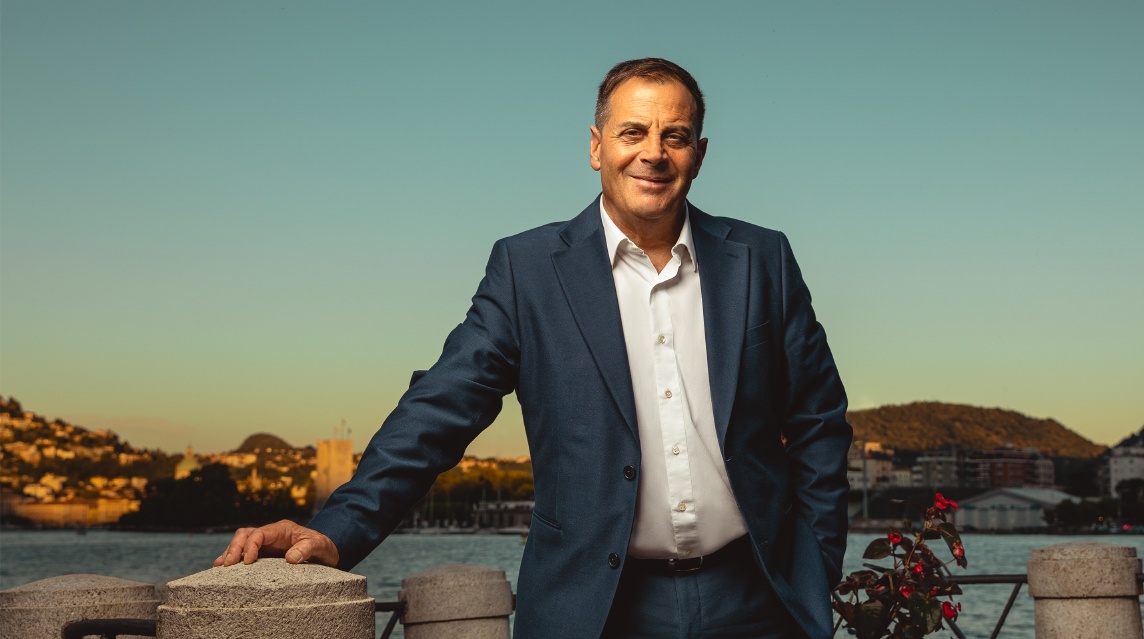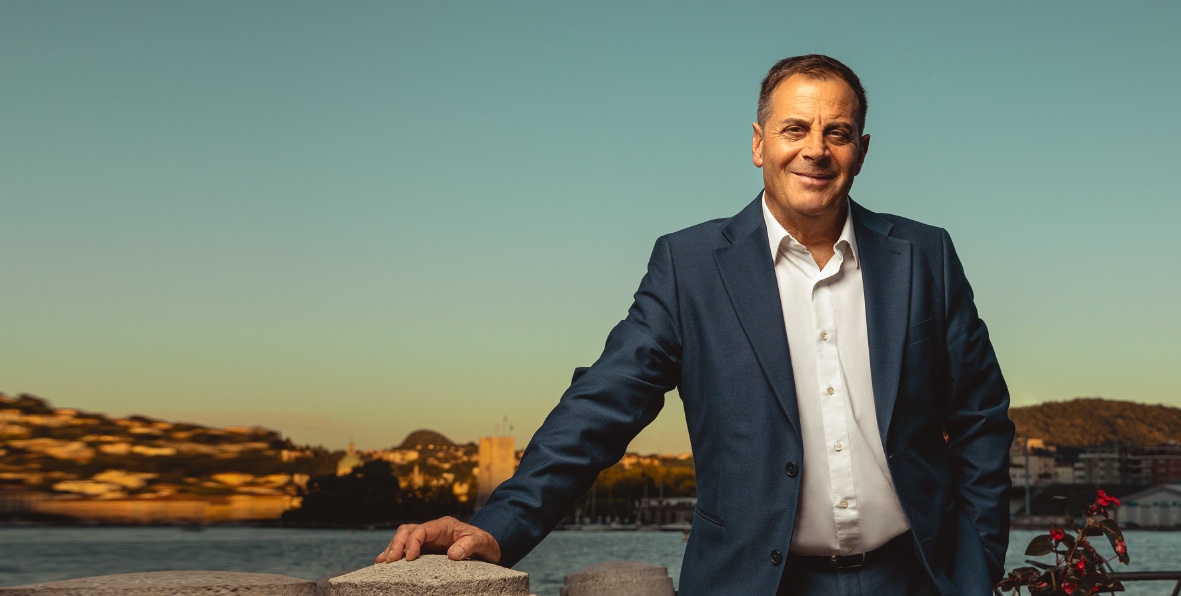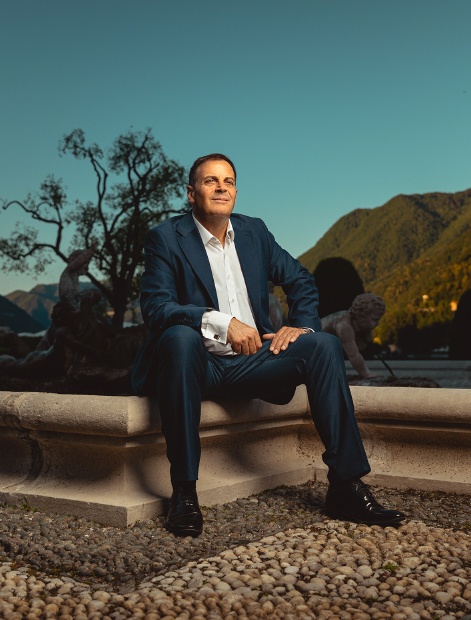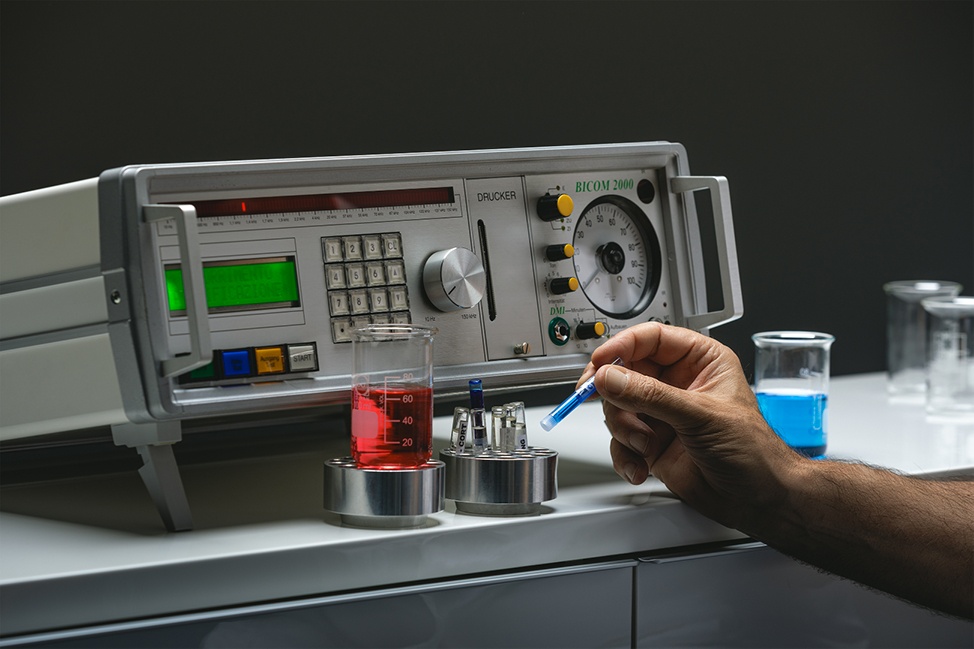The Researcher
Fulvio Balmelli

Fulvio Balmelli was born in Faido in the canton of Ticino in Switzerland on the 15th July 1964.
He has been an Independent researcher since 1990, with the tireless intent to develop effective and long-term solutions for human health, he found his way by creating his own path of knowledge and practical methods.
With a mechanical design background, he carried out studies alongside experts and doctors from various sectors, in the fields of human anatomy, homeopathy, phytotherapy, postural osteopathy, bioresonance, while continuing to deepen his knowledge of the physical and biophysical sciences. Since then, every morning, before starting the day, he studies medical and physics texts, updating himself and comparing data and studies.
In particular, in the last 15 years he has encoded thousands of electromagnetic frequencies emitted between molecules during specific biological processes, creating a real language able to communicate directly with the cells of any biological system. He created Citoalgorithmics, a new biophysical technology, through which it is possible to restore the biochemical processes of cells, without the use of chemistry.


The beauty of Research is that first and above all, you have to be accountable to yourself …
(Fulvio Balmelli – Independent Researcher)

A whole life dedicated to Research and its Pratical Applications
The accurate work carried out by Fulvio Balmelli over the years, as an independent researcher, has consisted in creating an applied research system, carried out in order to find practical and specific solutions. The primary objective was not to develop theoretical knowledge, but to exploit the knowledge already acquired from other previous basic research, place it in a single properly well-structured scheme based on logic-inference and use it for the development of the related Cytoalgorithmic technology.
It is worth noting that he has used his body as a “laboratory” for over 30 years in order to encode biochemical and molecular processes, sometimes undergoing long and complex self-experimentations, monitoring his clinical parameters several times a day through a comparison system of both biophysical and conventional investigations.
Balmelli’s working day in the field of research develops with constant and repeated rhythms over the years, with both pure and appliable research between 5 and 9 in the morning, followed by an alternation of investigations and treatments for the rest of the day, with related validation of the detected parameters and theories the next day. To date, he boasts approximately 40,000 hours of autonomous and self-financed research. The objective of this adventure has always been to organize, interpret and explain biological phenomena or part of them through the experimental scientific method, developing mathematical systems, capable of intervening on “altered” or “non-functional” systems, bringing them back to balance.
The experimental scientific method was introduced by Galileo Galilei and is based on a first observation, followed by an experiment, developed in a controlled manner, so that the phenomenon to be studied can be reproduced. The experiment aims to validate or refute the hypothesis formulated by the scientist. The hypothesis aims to explain the mechanisms underlying that particular event.
The requirements on which the scientific method is based are the following:
- the natural events observed have precise and identifiable causes
- there are schemes that can be used to describe what happens in nature
- if an event occurs with a certain frequency, the underlying cause is the same
- what a person perceives can also be perceived by others
- the same basic laws of nature apply, regardless of where and when certain events occur
The rigor of the scientific method lies in the fact that a theory is never definitive but is susceptible to modifications or substitutions, if new aspects not yet considered come to light. The scientific method requires a systematic search for information and continuous checking to see if pre-existing ideas are still supported by new information. If the new evidence is not favorable, scientists discard or modify their original ideas. Scientific thought is therefore subjected to constant criticism, modification and also to re-evaluation: this is what makes it so great and universal. Fulvio Balmelli’s research started from the fundamentals of biophysics and from the postulates of bioresonance (to clarify this subject we invite you to consult the page The Technology), and, by applying the experimental scientific method, he finally developed a whole new body of knowledge which, applied in a logical and invariable sequence, has given rise to a new biophysical technology, called Cytoalgorithmics.
INTERVIEW TO
Fulvio Balmelli

What was your course of study?
I started natural medicine in 1988. Thanks to a health law still in force, I attended the first existing courses in phytotherapy, homeopathy and osteopathy, barely known at that time. You must know that in Switzerland there is a law safeguarding the so-called “healers”, those people who use therapies commonly accepted by local and popular tradition: those who know how to massage, fix the joints, use herbs, etc. In 1990 I went to Germany and did all the courses on Bioresonance. I was very skeptical, I didn’t fully understand how this thing could work. I always want to verify and check things out, I need to be sure, because theory is nice, but practice is something different and we need certain and repeatable results based on scientific criteria.
I read books on every subject; unfortunately, in scientific literature, there are many contradictions regarding nutrition, so I had to experiment by myself before finding out what was the most correct thing to do (for example, I tried all the main diets in the world). Then I carried out thousands of tests on different nutrients, resulting in some interesting discoveries which then led me to create the Kyminasi Diet, the Kyminasi Cosmetic line and even the Kyminasi solutions for agriculture.
I am still carrying out research in the field of regenerative medicine which is a fascinating subject to me that keeps feeding my hopes of obtaining good results in the near future.
What does it mean to be an independent researcher?
A value equal to about six million of euros spent on research in the last 30 years, including my unpaid working hours. For the first 15 years, while working as a freelancer, I did 7 to 10 hours of research every single day, (sleeping 4 hours per night, sometimes only 2); over the next 15 years, I worked on research 5 hours every day (finally sleeping 6 hours a night). Today I can say that it was worth it, even though it was very hard.
As you may know, many researchers use their bodies as a research laboratory. In fact in order to find solutions you need to know the problem very well. I have caused myself various negative physical conditions such as asthma, allergies and intoxications – sometimes it took many years to get out of them. A couple of times I feared for my life (a few know this). These researches allowed me to understand how to apply, under conventional medicine control, the principles of Bioresonance which then resulted in a completely new subject that I called Cytoalgorithm, which uses much smaller frequencies to deal directly with the cells of the body.


What is your professional goal?
My primary purpose is definitely to help medicine. There are several pathologies and diseases that I have always considered as unfair because they penalize life; you can treat them with traditional medication, but sometimes the body never goes back to the way it was before. I work so that we can stay as healthy as possible, for as long as possible.
Over time, I realized my discoveries could also benefit other fields such as agriculture and drinking water, therefore not only serving as support in treatment, but also as prevention.
I had to broaden my horizons in order to really achieve my goals.
When was this passion for medicine born?
Since I was a child I told my mom that I wanted to do a job to serve others and make them happy. I have always had the idea of working to ensure others can have the best: I always try to be kind, considerate and available because I like helping people.
How did you come to integrative medicine?
I wanted to find points of connection between conventional medicine and those sectors of natural medicine that are not yet recognized by the scientific community and are not based on pharmacology, in particular the biophysical field. Today I work in a clinical context: every non-pharmacological treatment receives validation through conventional tests and the results of biophysical investigations are also detectable by conventional tests.
Do you practice natural and regenerative medicine?
Yes, to ensure a better quality of life and increased lifespan by building a stronger body and improving its functionality. I have to thank all the doctors I collaborated with during this journey, which began more than thirty years ago, some of whom I still work with today. We have faced thousands of situations, which at first seemed impossible, obtaining improvements and solving pathologies with patients going back to normal life. But my dream goes much further: why can’t a person of 60 or 70 years old have the energy he had in his forties or fifties? The body undergoes an aging process that limits its life; my idea is not only the recovery from disease, but also to slow down aging (as far as possible) and live a long life in a healthy body.

Is it a dream achievable by medicine in the future?
Yes, I’m sure about that. One of my favorite quotes is from Thomas Alva Edison: “The doctor of the future won’t give medication, but will involve his patients in the care of the human body, in the diet, in the causes and prevention of diseases”. (Quote: The Journal of Medical-physical Research, 1948).
Would that mean a more humane medicine?
Definitely. Sometimes medicine is more concerned with the disease than with the patient. Umberto Veronesi said: “We need to go back to a medicine that addresses the person. To be able to cure someone we need to know who they are, what they think, what plans they have, what they enjoy and what makes them sad. We need to get the patient to talk about his life, not his ailments. Today treatments are prescribed with a reinforced concrete manual: if you have this, do this; if you have have that, take something else. But this is not what taking care or treating actually is”. This concept follows the thinking of Plato, who wrote that the biggest mistake in the treatment of diseases is that there are doctors for the body and doctors for the soul, instead the two should not be separated. As far as I’m concerned, I believe, more than ever, that the physician of the body should never forget that he is also dealing with a soul, even if, from a body mechanics point of view, there are knowable and invariable laws which are the basics of the stable principle I have built my technology on, in order to help doctors in precision medicine.
But this must not exclude the basic element that supports the relationship between patient and doctor and largely determines the success of the recovery: it is about understanding, communication, sincere concern for the person. This always comes first.

How did this strong interest in research arise?
In 1985, I was 21, it was the year of the biggest frost of the last century, with temperatures dropping down to minus 25 degrees in the plains. I was stuck in a refuge in the Val di Blenio in Switzerland for six hours, after a sudden snowfall slowed my march.
I was alone, my feet and hands were frozen. At the Lugano hospital, doctors told me I had a severe frostbite in my hands and feet and they wanted to amputate the two big toes. I didn’t even think about it, I left the hospital and started taking care of myself. After a few weeks, doctors noted a clear improvement and I could avoid the amputation. But it took six months to get back to normal.
This experience has increased my desire to find real solutions in the field of integrated and regenerative medicine. I have studied for many years what I needed to know from official and natural medicine and I always keep updating myself. I have been actively collaborating with different doctors and I made myself available for some of them, for the development of different biophysical treatments in the clinical setting.
I feel alive to the extent that I can help others and I can’t say that I haven’t lived.

When did you also start taking care of plants?
Unfortunately nowadays there is an abuse of chemistry in agriculture. The idea of working on plants was born many years ago; one night I was researching on how carbon dioxide affects gastric factors. I was in a room where there was a beautiful plant and I thought “You work with carbon dioxide” and at that moment I said to myself that I could develop a technology for agriculture, that could be completely natural, with no negative effects on the environment or man.
Before arriving at the definitive prototype, which is truly effective and gives good results in agriculture, I developed more than 100 of them and among these, we have carried out extensive experiments on 6 of them, this over the years led us to the definitive prototype.
The primary objective of this project has always been to provide organic agriculture with a tool that would support it and make it competitive on the market, so as to guarantee more quality and nutrient dense fruits and vegetables to future generations, which today, unfortunately, are lacking nutrients for many reasons.
Thanks to your discoveries what results have been achieved in agriculture?
Many of the fruits and vegetables that are grown today are tasteless and have lost 60 to 70% of their mineral content. We have laboratory tests that show marked improvements in this regard with our device. We continuously receive positive feedback from farmers all over the world.
That was what I wanted, bringing beauty and increased productivity by using fewer chemicals for the benefit of human health.


What can you tell us about your Kyminasi Water device for drinking water treatment?
Many years ago, I now laugh when I think about it, at the beginning of my research on the human body and on bioresonance, I reflected on a very obvious and rather simple fact; our body is made up of about 60% water. In those years the concept of improving water did not exist yet, I am talking about purifiers for domestic use. It took me many years to complete the research on the best water for the human body. I began to check the effectiveness of all the water purifiers available on the market and I looked for a purifier capable of creating more alkaline, less acidic water. Being an expert in biophysics and body signal transmission, the aim of my research was of course to improve water, but with a completely different purpose from all others, I worked on water with a point of vieew addressed to the body and not just on water as an end product itself. I therefore created a technology that allows water to be better assimilated by the body, with greater oxygen content and a whole series of signals that are beneficial for the human body and for those who drink it, also containing preventive factors for health.
It is truly incredible that by making very small changes on the frequencies, water can change so much, even in flavor.
You would never think this could possible. It is a more vital, better, more assimilable water that truly quenches your thirst. The Kyminasi Water device is present in various water purification systems, which purify water with different technologies (ionization, microfiltration, reverse osmosis, etc.). The focal point of this project is not purification, which is certainly important and must be carried out through the best filters, but the fact that water must be vital and truly assimilated by the body.
The idea was to bring a source of well-being, prevention and health into people’s homes through a simple thing such as drinking a glass of water.

